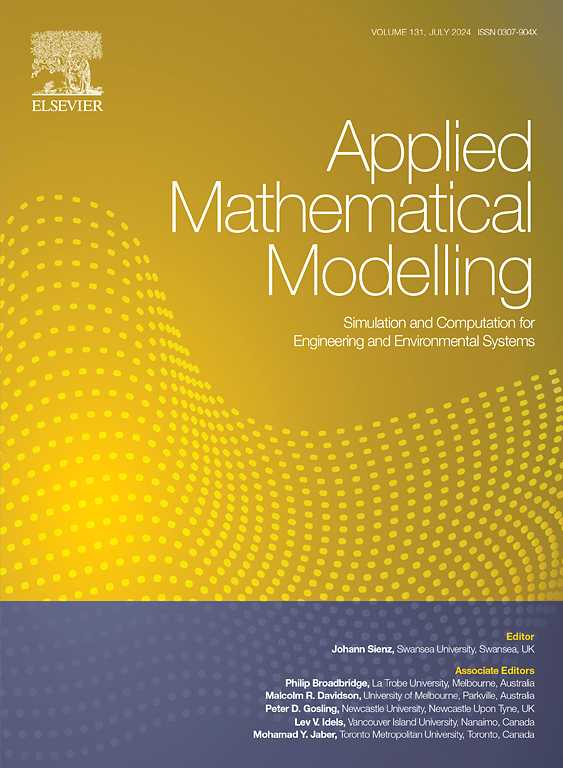Flat elliptical matrix crack impact on bending, stresses and stability of beam-like aerospace structures
IF 4.4
2区 工程技术
Q1 ENGINEERING, MULTIDISCIPLINARY
引用次数: 0
Abstract
For the first time, the present investigation comprehensively examines the effect of elliptical crack parameters and positions in individual or system layers on stress distributions, bifurcation buckling points, and bending under different loads of beam-like aerospace structural members. It also constitutes an effort to develop a model of graphene nanoplatelets reinforced multilayer composite beams with an elliptical matrix crack. Mechanical properties of the beam are obtained based on the modified Halpin–Tsai micromechanical model that is well-established experimentally and presented in the literature. Variational Euler–Lagrange equations of motion were derived based on assumptions of Reddy's shear deformation theory and linear Green–Lagrange strain tensor. Moreover, physical neutral surface properties were used to formulate the boundary value problem for unsymmetric nanocomposite laminates correctly. In addition, graphene platelet and crack distribution move neutral surface position in nanocomposite layers. Numerical results are obtained via the Fourier series method and by solving nonlinear multi-parametric characteristic equations. Before a complete numerical investigation, an example validation study of the obtained solution was performed. The results addressed how several layers, diverse elliptical matrix crack patterns, density, graphene nanoplatelets distribution, and weight fraction influence bending and shear stress distribution, critical axial forces, and beam bending under diverse loads. One exception where results for the first and last three layers with cracks do not overlap is FG-V distribution with nonsymmetric material properties for the midplane. Based on the study, in the case of nanofiller-reinforced nanocomposite with 21 layers, three cracked layers hardly influence bending behaviour and stress distribution. Finally, it is shown that the neutral surface position is insignificantly shifted compared to the beam's middle surface for diverse crack combinations and functionally graded graphene platelet distributions.
求助全文
约1分钟内获得全文
求助全文
来源期刊

Applied Mathematical Modelling
数学-工程:综合
CiteScore
9.80
自引率
8.00%
发文量
508
审稿时长
43 days
期刊介绍:
Applied Mathematical Modelling focuses on research related to the mathematical modelling of engineering and environmental processes, manufacturing, and industrial systems. A significant emerging area of research activity involves multiphysics processes, and contributions in this area are particularly encouraged.
This influential publication covers a wide spectrum of subjects including heat transfer, fluid mechanics, CFD, and transport phenomena; solid mechanics and mechanics of metals; electromagnets and MHD; reliability modelling and system optimization; finite volume, finite element, and boundary element procedures; modelling of inventory, industrial, manufacturing and logistics systems for viable decision making; civil engineering systems and structures; mineral and energy resources; relevant software engineering issues associated with CAD and CAE; and materials and metallurgical engineering.
Applied Mathematical Modelling is primarily interested in papers developing increased insights into real-world problems through novel mathematical modelling, novel applications or a combination of these. Papers employing existing numerical techniques must demonstrate sufficient novelty in the solution of practical problems. Papers on fuzzy logic in decision-making or purely financial mathematics are normally not considered. Research on fractional differential equations, bifurcation, and numerical methods needs to include practical examples. Population dynamics must solve realistic scenarios. Papers in the area of logistics and business modelling should demonstrate meaningful managerial insight. Submissions with no real-world application will not be considered.
 求助内容:
求助内容: 应助结果提醒方式:
应助结果提醒方式:


